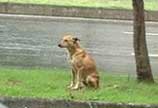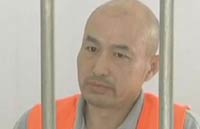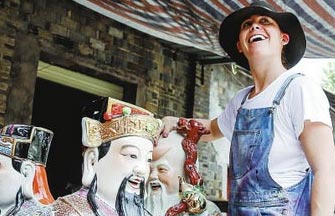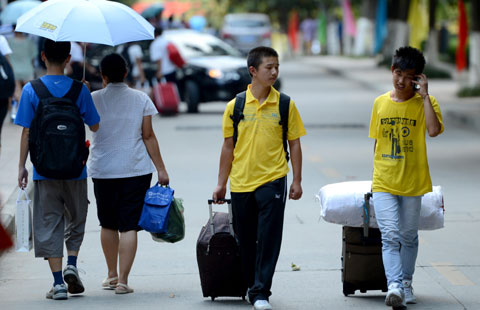New barrier posts installed to secure pedestrian safety
By Cao Yin (China Daily) Updated: 2014-06-30 07:27Beijing has been upgrading safety features on Chang'an Avenue and at crossings along the road over the past few months to prevent vehicles from crashing into pedestrians.
Hundreds of crash barrier posts have been installed along the avenue, which runs through the capital's major streets and key scenic spots, including the Wangfujing shopping area and Tian'anmen Square.
Each steel-reinforced concrete post is 60 centimeters tall and covered with stainless steel, according to a traffic warden who works at a crossing at Fuxingmen Waidajie.
The new posts look better and are much sturdier than traditional, hollow-body iron posts, said the warden, who declined to give his name.
Dai Peng, director of investigation department at the People's Public Security University of China, said the improvement of safety facilities is a must for metropolitan cities worldwide and it is just the first step of Beijing's comprehensive anti-terrorism measures.
The municipal police said earlier that Beijing should be the safest city in China, "so the building of these posts is also a tangible act upon that promise", Dai said.
They are separated by a distance of about 1 meter, which is closer than before but still wide enough for wheelchairs and bicycles to pass through.
"The old-style iron chains were loose and not safe," the traffic warden said, referring to the tragedy at Tian'anmen Square on Oct 28, when terrorists from the Xinjiang Uygur autonomous region drove a car into a crowd at the square before setting the vehicle on fire. Five people were killed, including the three in the car, and 40 others were injured.
The new posts are "more effective in protecting pedestrians from such attacks," the traffic warden added.
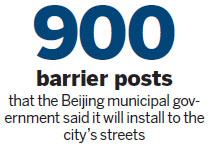
However, a pedestrian named Liu questioned the need for the new posts, saying that motorists with safety awareness are not likely to intentionally drive onto pedestrian areas.
Thirty-two of the new posts had been installed along Fuxingmen Waidajie as of Sunday.
The government said 900 such posts will be installed.
The installation of the posts underscored the government's determination to combat terrorists and violence at the same time, said Dai.
Earlier, the government had reinforced crash barriers in the central section of the avenue.
"The number of the new posts depends on how long a crossing is," said Huang Shouyi, a sanitation employee working around the area.
"It's harder to make a new post. Workers poured the concrete into a deep hole that had been first dug up, and then made the stainless steel as a cover," said Huang, who witnessed the construction at night.
"The concrete ground is tougher and not flat, so the new posts along the Fuxingmen area took workers about one week to install," said the 45-year-old.
At Naoshi crossing, 1 kilometer from Fuxingmen, the post construction was still underway and the area was surrounded by blue fencing.
caoyin@chinadaily.com.cn
- China recalls prisoners serving terms outside jails
- Public weighs in on noise rule
- Fascinating folk show, Beijing-style
- Party chief of Guangzhou city under investigation
- 110 new cancer cases diagnosed daily in Beijing
- Emergency tunnel drill to save lives
- QVOD fined $42m for copyright infringement
- Hebei envisions integrated traffic network by 2020
- Relatives unmoved by new search zone for jet
- Officials deny planning to turn 600 colleges into senior vocational schools
